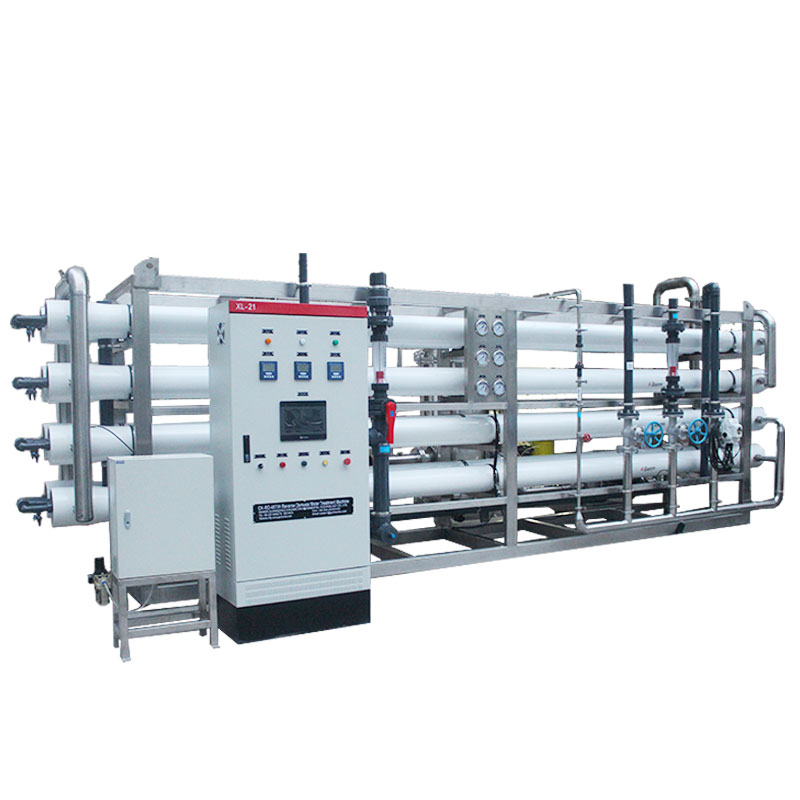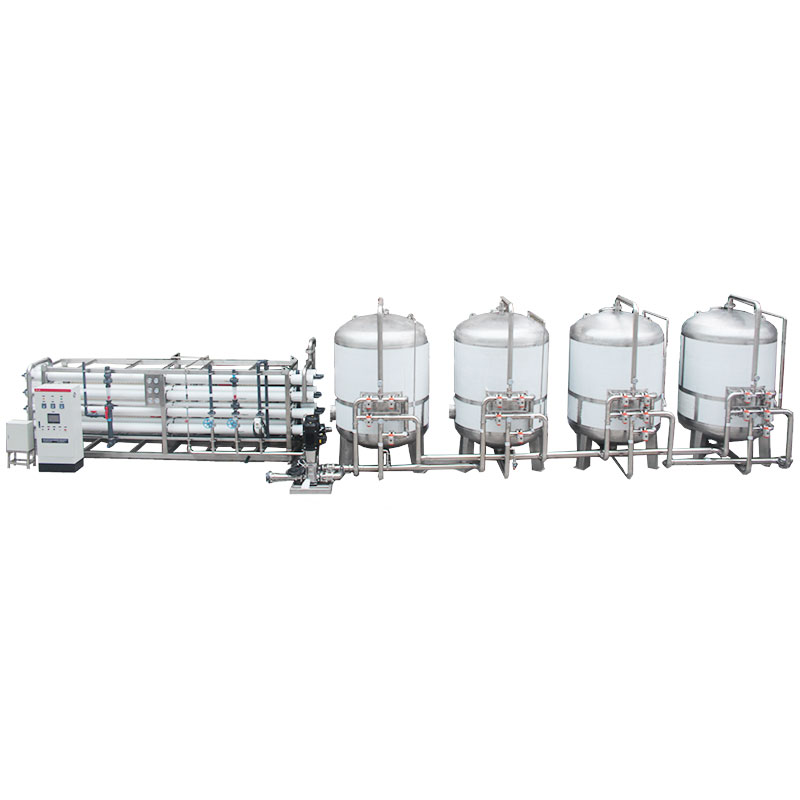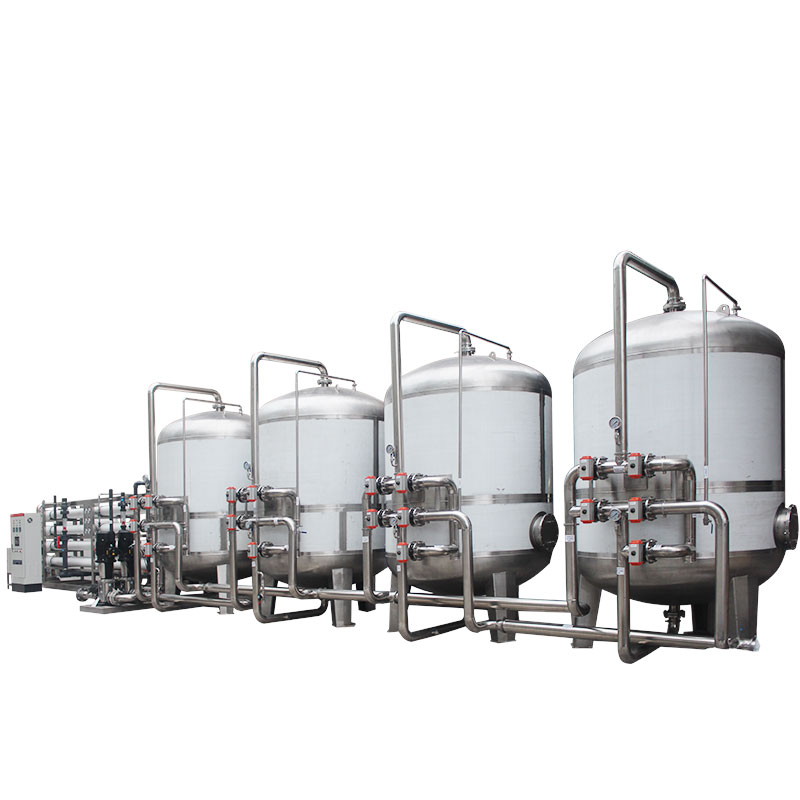How do industrial water treatment plants work?
Introduction: Industrial water treatment plants play a vital role in environmental protection and sustainable development. By purifying and treating industrial wastewater, these factories ensure the reuse of water resources and reduce pollution of natural water bodies. This article will focus on the operation of industrial water treatment plants, explaining their basic working principles and treatment processes at different stages.
How do industrial water treatment plants work?
The operation of industrial water treatment plants is mainly divided into two basic stages: primary stage and secondary stage.
1. Primary stage:
First, in the primary stage, water treatment plants focus on removing solid particles and suspended solids from the water. These solid sediments may come from wastewater from industrial production processes, such as sediments, slurries and waste residues. To achieve this goal, water treatment plants usually use equipment such as sedimentation tanks or sedimentation tanks to separate solid particles from the water through gravity sedimentation. Once these solids settle to the bottom to form a sludge layer, clean water is pumped to the next stage for further treatment.
Through the primary stage of treatment, suspended particles, grease and other solid matter in the wastewater are significantly removed, providing a relatively clean water source for subsequent treatment.
2. Secondary stage:
Next is the secondary stage, which mainly uses biological treatment technology and uses microorganisms to decompose organic matter in the wastewater. Activated sludge and oxidation ditch are common secondary treatment methods. At this stage, the water treatment plant will transfer the clean water to a bioreactor or biofilter, using the action of microorganisms to degrade and remove organic matter, ammonia nitrogen and other pollutants in the water. Microorganisms purify water by converting organic matter into harmless substances and converting ammonia nitrogen into nitrogen gas or nitrogen compounds. The key to this stage is to provide suitable environmental conditions, such as suitable temperature, pH value and oxygen supply, to promote the growth and activity of microorganisms.
It should be noted that sometimes these two stages are combined into one operation, where solids settling and biological treatment are performed simultaneously. This depends on the water quality and type of contaminants, as well as the specific conditions and requirements of the industrial water treatment plant. Through these complex and sophisticated water treatment systems, industrial water treatment plants ensure the sustainable use and recycling of water resources in industrial production processes while protecting the environment and human health.

What is the difference between the primary and secondary stages of an industrial water treatment plant?
The operation of industrial water treatment plants involves primary and secondary stages, which have different functions and treatment methods.
First of all, the main purpose of the primary stage is to remove solid particles and suspended matter in the water. These solid particles may be waste and pollutants generated during industrial production processes, such as sediments, slurries and waste residues. In the primary stage, the water treatment plant will use equipment such as sedimentation tanks or sedimentation tanks to separate solid particles from the water through gravity sedimentation to form a sludge layer. In this way, the clean water is separated and can enter the next stage of treatment.
In contrast, the secondary stage involves biological processes with the goal of further purifying the water source. At this stage, the water treatment plant will transfer the clean water to a bioreactor or biofilter, using the action of microorganisms to degrade and remove organic matter, ammonia nitrogen and other pollutants in the water. Microorganisms purify water by converting organic matter into harmless substances and converting ammonia nitrogen into nitrogen gas or nitrogen compounds. Compared with the primary stage, the treatment in the secondary stage is more delicate and complex, and it is necessary to provide suitable environmental conditions to promote the growth and activity of microorganisms.
What are the advanced technologies for industrial water treatment plants?
With the development of science and technology, industrial water treatment plants have adopted a series of advanced technologies to improve treatment efficiency and water quality.
1. Membrane separation technology:
Membrane separation technology is an efficient water treatment method, including microfiltration, ultrafiltration, nanofiltration and reverse osmosis. They separate contaminants from water molecules through a semi-permeable membrane, providing high-quality purified water.
Membrane separation technology excels in industrial wastewater treatment, especially in removing tiny particles, heavy metals and organic matter.
2. Biofilm technology:
Biofilm technology is another treatment method that utilizes microorganisms and includes biofilm reactors and membrane bioreactors. They use microorganisms to grow on solid surfaces and degrade organic matter in wastewater.
The advantage of biofilm technology is that it can treat high-concentration organic wastewater, while occupying a small area and having high treatment efficiency.
3. Advanced oxidation technology:
Advanced oxidation technology (AOP) produces strong oxidants such as ozone, hydrogen peroxide and ultraviolet light through chemical reactions. They can oxidize and degrade organic matter and toxic substances in wastewater.
Advanced oxidation technology is excellent in removing refractory organic matter and disinfecting, and is suitable for highly polluted industrial wastewater.

How is the biological treatment process implemented in industrial water treatment plants?
The biological treatment process in industrial water treatment plants is one of the important steps to ensure that water quality meets standards. Understanding how biological treatment processes work and operate is critical to understanding the full picture of industrial water treatment plants. The following are the basic principles of biological treatment processes in industrial water treatment plants:
1. Bioreactor:
Biological treatment is usually achieved through bioreactors or biofilters. These reactors often contain packing or media, such as biofilter balls or plastic packing, to provide surface area for microbial growth. As water passes through these fillers, microorganisms attach to the surface and undergo the process of degrading organic matter.
2. Microbial degradation:
In a bioreactor, microorganisms convert organic matter into simpler substances such as carbon dioxide and water through metabolic processes. This process involves a range of different types of microorganisms that grow and reproduce in different environmental conditions to achieve effective degradation of different pollutants.
3. Redox process:
Biological treatment is a redox process in which microorganisms use oxygen to oxidize organic matter, thereby releasing energy and degrading the organic matter into simpler compounds. This process requires proper oxygen supply and maintenance of proper pH and temperature to support microbial growth and metabolism.
The biological treatment process in industrial water treatment plants is a complex and precise project that requires precise control and management to ensure that it operates effectively and meets the required water quality standards.

What is the environmental impact of industrial water treatment plants?
Industrial water treatment plants have positive and negative environmental impacts that need to be weighed.
1. Positive impact:
Industrial water treatment plants reduce pollution to natural water bodies and protect water resources and ecosystems by purifying wastewater. The purified wastewater can be reused in industrial production and agricultural irrigation, reducing water demand and promoting resource recycling.
2. Negative impacts:
The operation of industrial water treatment plants may produce some by-products, such as sludge, waste gas and waste residue, which need to be properly treated to avoid secondary pollution to the environment. Greenhouse gases and energy consumption may be generated during the treatment process, so energy-saving and emission reduction technologies need to be adopted to reduce the impact on climate change.
3. Future development trends:
Industrial water treatment plants will continue to use advanced technologies to improve treatment efficiency and water quality and reduce negative impacts on the environment. Through intelligent and automated management, the factory's operating efficiency and monitoring capabilities are improved to ensure the stability and safety of wastewater treatment.
Industrial water treatment plants play an important role in environmental protection and sustainable development. Through the rational selection and application of advanced technologies, these factories can effectively purify industrial wastewater and reduce pollution to natural water bodies. In the future, with the continuous advancement of science and technology, industrial water treatment plants will continue to innovate, further improve treatment efficiency and environmental friendliness, and contribute to the harmonious development of mankind and nature.




